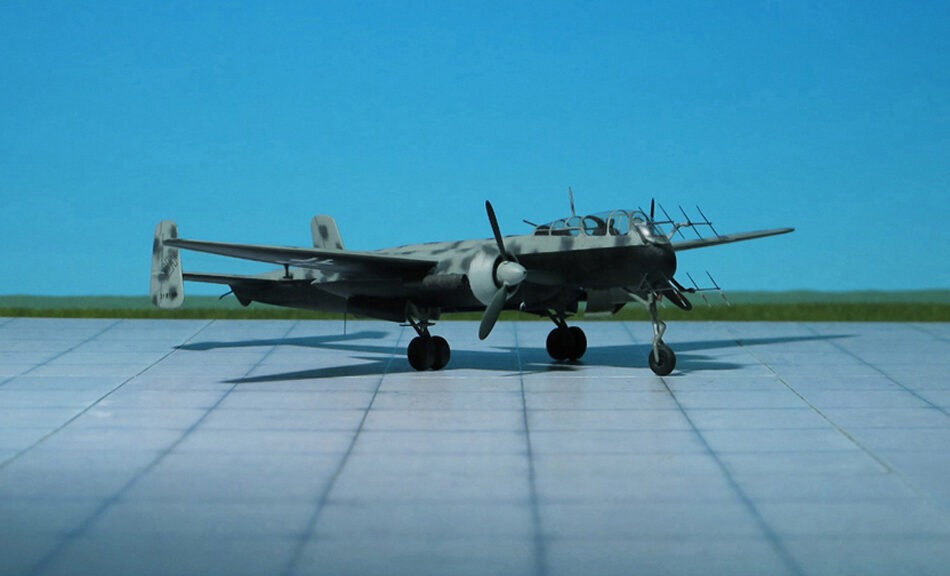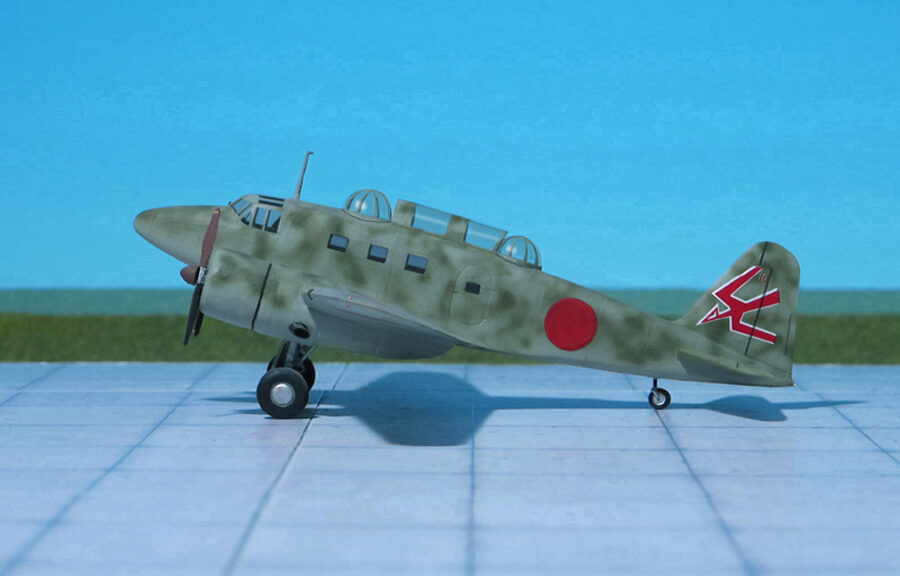TYPE: Night Fighter
ACCOMMODATION: Crew of three
POWER PLANT: Two Junkers Ju 222 liquid-cooled radial engines, rated at 2,500 hp each, resp. two Daimler-Benz DB 603 liquid-cooled engines, rated at 1,900 hp each
PERFORMANCE: 435 mph
COMMENT: The Heinkel He 219 „Uhu“ (Eagle-Owl) was a night-fighter that served with the German Luftwaffe in the later stages of World War II. A relatively sophisticated design, the He 219 possessed a variety of innovations, including Lichtenstein SN-2 advanced VHF-band intercept radar, also used on the Junkers Ju 88G and the Messerschmitt Bf 110G night fighters. It was also the first operational military aircraft to be equipped with ejection seats and the first operational German World War II-era aircraft with tricycle landing gear. Had the „Uhu“ been available in quantity, it might have had a significant effect on the strategic night bombing offensive of the Royal Air Force; however, only 294 of all models were built by the end of the war and these saw only limited service
By the end of 1944, the Luftwaffe had accepted 214 Heinkel He 219As, but during the previous November, the promulgation oft he „Jäger-Notprogramm“ (Fighter Emergency Programme) had sounded death knell for all twin piston-engine fighters with the sole exception of the Dornier Do 335 Pfeil. Ernst Heinkel tacitly ignoring the RLM edict and finalized an assembly line for the fighter at Oranienburg.
Prior to the creation of the „Jäger-Notprogramm“ several variants of the basic He 219 had reached advanced development and even initial production stages. The follow-on series to the He 219As in service was to be the He 219B fitted with the new, but troublesome 2,500 hp Junkers Jumo 222A/B 24 cylinder engines – a multibank, liquid-cooled inline engine, with six rows of cylinder blocks having four cylinders each—which would have allowed the He 219 to reach 440 mph, each of which were almost the same displacement in their A/B (supercharged) and E/F (supercharged with intercoolers) versions and each only very slightly heavier, compared to the Pratt & Whitney R-2800 Double Wasp radial engines in the American Northrop P-61 „Black Widow“ night fighter. The He 219B wing was also to have had an increased span of 22.06 m for better high altitude performance. The Jumo 222 did not reach production status, with just under 300 examples built in at least three differing displacement sizes. Only a few test machines were ever fitted for the engines; some additional air frames were built with the enlarged wing. These examples were slated to fly with high-altitude versions of the standard DB 603 powerplants in place of the troubled Jumo 222 multibank powerplants, but only one or two test machines ever flew with them.
It was proposed to install the Junkers Jumo 222 in a high-altitude three-seat model, the Heinkel He 219B-1, but the non-availability of the Junkers engine necessitated the installation of the Daimler-Benz DB 603Aa in a sole exemple of this variant completed and tested. This He 291B-1 had an aerodynamically refined cockpit canopy, a lengthened fuselage, and an extended wing spanning. Flight testing was cut short when, during the second landing, the starboard undercarriage leg collapsed and the aircraft suffered such intensive damage that it had to be scrapped.
The second B-series, the Heinkel He 219B-2, was intended specifically for anti-Mosquito operations, and was similar in concept of the He 219A-6 in being stripped of virtually all armor. Employing an He 219A-5 two-seat fuselage married to a long-span B-series wings it was powered by Daimler-Benz DB 603 engines with TK 13 turbo-superchargers, but only few additionally aircraft of this type were hurriedly completed. These were placed in operational service with a forward-firing armament of two 20-mm MG 151 cannon in the wing roots, and two 30-mm MK 108 cannon in a „Schräge Musik“ installation.
The Heinkel He 219B-3 was similar to its predecessor apart from the reinstatement of ventral tray armament comprising two 30-mm MK 108 and two 20-mm MG 151 cannon, and this, too, was to have been powered by two Daimler-Benz DB 603L engines, but while still under construction, Heinke received a directive from the Technischen Amt to await delivery oft he Junkers Jumo 222 engines for installation in this aircraft. In the event, the Junkers power plants never arrived and, in consequence, the He 218B-3 never left the ground (Ref.: 8).


























